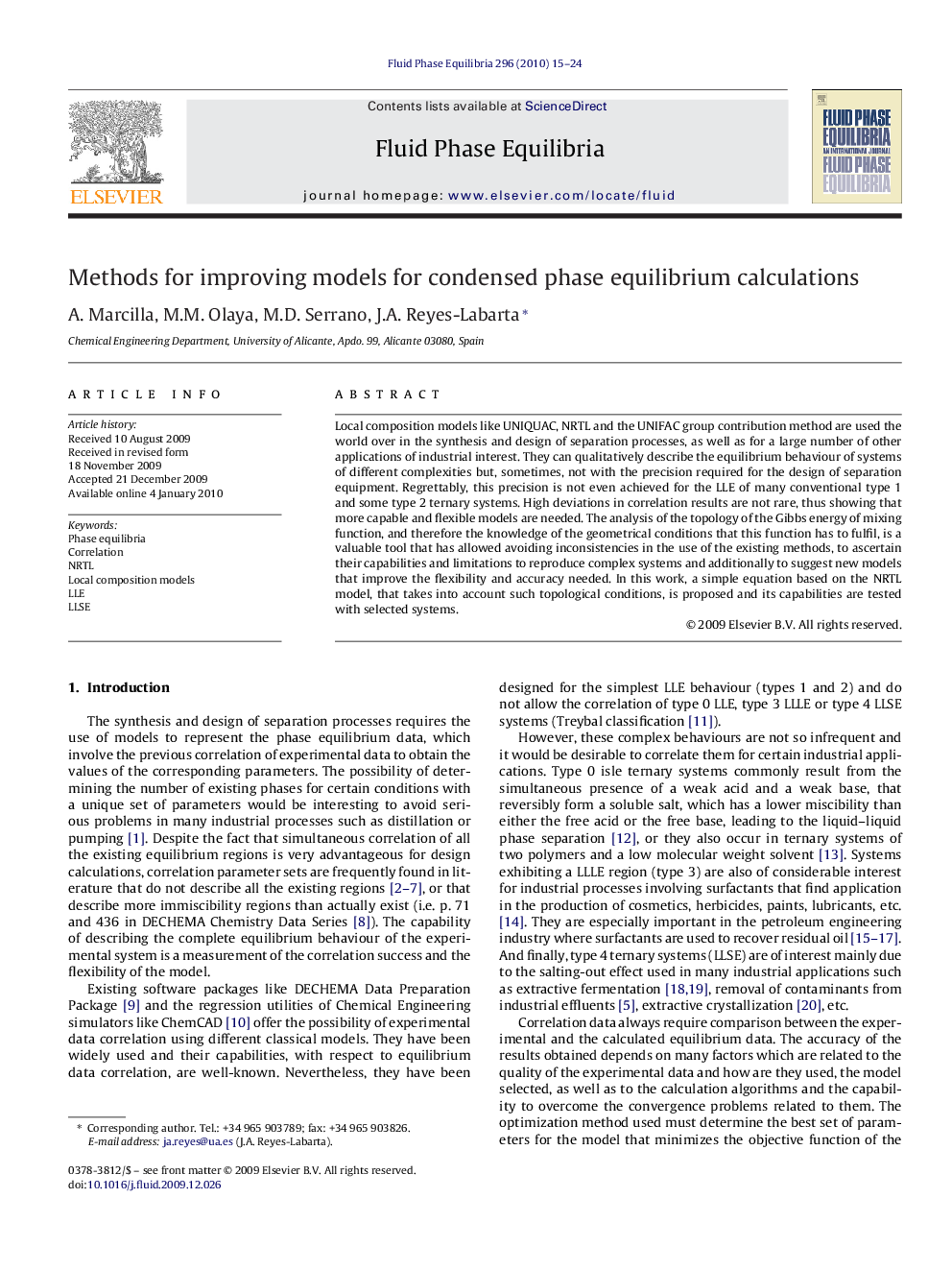| Article ID | Journal | Published Year | Pages | File Type |
|---|---|---|---|---|
| 202733 | Fluid Phase Equilibria | 2010 | 10 Pages |
Local composition models like UNIQUAC, NRTL and the UNIFAC group contribution method are used the world over in the synthesis and design of separation processes, as well as for a large number of other applications of industrial interest. They can qualitatively describe the equilibrium behaviour of systems of different complexities but, sometimes, not with the precision required for the design of separation equipment. Regrettably, this precision is not even achieved for the LLE of many conventional type 1 and some type 2 ternary systems. High deviations in correlation results are not rare, thus showing that more capable and flexible models are needed. The analysis of the topology of the Gibbs energy of mixing function, and therefore the knowledge of the geometrical conditions that this function has to fulfil, is a valuable tool that has allowed avoiding inconsistencies in the use of the existing methods, to ascertain their capabilities and limitations to reproduce complex systems and additionally to suggest new models that improve the flexibility and accuracy needed. In this work, a simple equation based on the NRTL model, that takes into account such topological conditions, is proposed and its capabilities are tested with selected systems.
